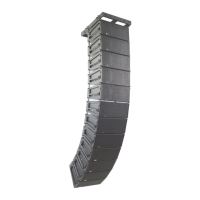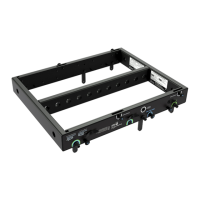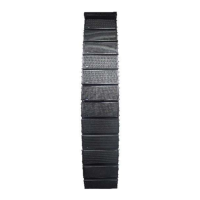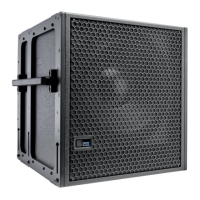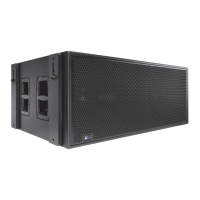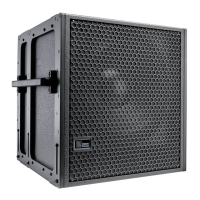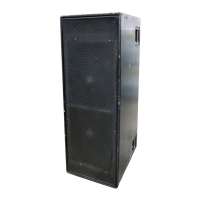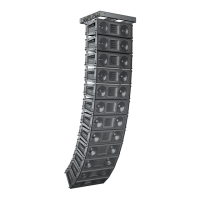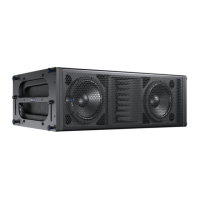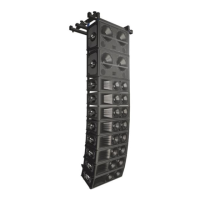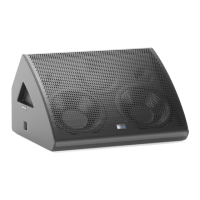CHAPTER 3: AMPLIFICATION AND AUDIO
21
When engaged, the limiters not only protect the drivers but
also prevent signal peaks from causing excessive distortion
in the amplifier channels, thereby preserving headroom and
maintaining smooth frequency response at high levels.
When levels return to normal, below the limiter thresholds,
limiting ceases.
LEOPARD performs within its acoustical specifications at
normal temperatures when the Limit LEDs are unlit, or when
the LEDs are lit for 2 seconds or less and then turn off for at
least 1 second. If the LEDs remain lit for longer than
3 seconds, the loudspeaker enters hard limiting where:
•Increases to the input level have no effect
•Distortion increases due to clipping
•Drivers are subjected to excessive heat and excursion,
thereby compromising their lifespan
CAUTION: The Limit LEDs indicate when a
safe, optimum level is exceeded. If a LEOPARD
loudspeaker system begins to limit before reaching
the desired SPL, consider adding more loudspeakers
to the system.
AMPLIFIER COOLING SYSTEM
LEOPARD is convection cooled. The amplifier’s heat sink
provides natural convection cooling from the air flowing near
its fins. When exposed to high ambient temperatures or
when driven continuously at high output levels, a variable-
speed fan circulates air internally to ensure that LEOPARD
remains operational.
CAUTION: To keep LEOPARD from overheat-
ing, allow at least 6 inches behind the cabinet
for proper ventilation.
CAUTION: LEOPARD’s heat sink can reach
temperatures up to 80 °C (176 °F) during
extreme operation. Wait 15 minutes for the loud-
speaker to cool before touching.
ACTIVE/STATUS LED
During normal operation, when LEOPARD is powered on,
the Active/Status LED is solid green. If the loudspeaker
encounters a hardware fault, or the loudspeaker begins to
overheat, the LED flashes red. In some instances, the
loudspeaker will continue to output audio while the LED
flashes red, though with a reduction in the limiter threshold
and acoustic output to protect the loudspeaker.
If a loudspeaker is overheating (for RMS-equipped
loudspeakers, you can verify this situation in Compass
RMS), a reduction in SPL may be necessary. If, after a
reduction in SPL and an appropriate cooling period, the
Active/Status LED continues to flash red (does not return to
solid green), contact Meyer Sound Technical Support.
If the Active/Status LED flashes red and the loudspeaker
does not output audio, contact Meyer Sound Technical
Support immediately.
CAUTION: If a LEOPARD loudspeaker system
consistently overheats before reaching the
desired SPL, consider adding more loudspeakers to
the system.
NOTE: During startup, the Active/Status LED
flashes multiple colors successively. For more
information about the power on sequence, see
“Intelligent AC Power Supply” on page 16.
TIP: When LEOPARD is connected to an RMS
network, the Compass RMS software provides
additional feedback on the loudspeaker’s hardware
status and operating temperature. For more informa-
tion, see Chapter 5, “RMS Remote Monitoring Sys-
tem.”
Figure 15: LEOPARD Limit LEDs
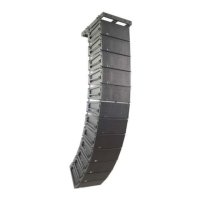
